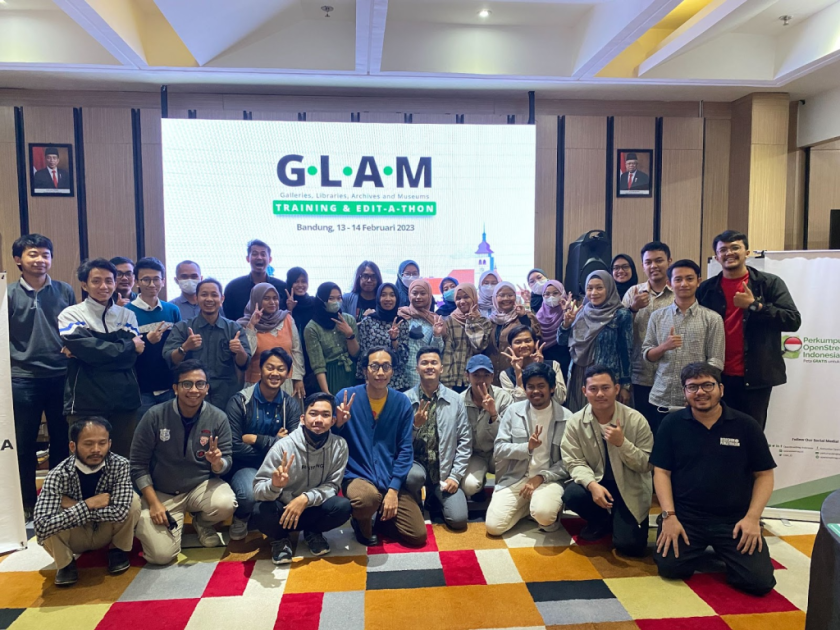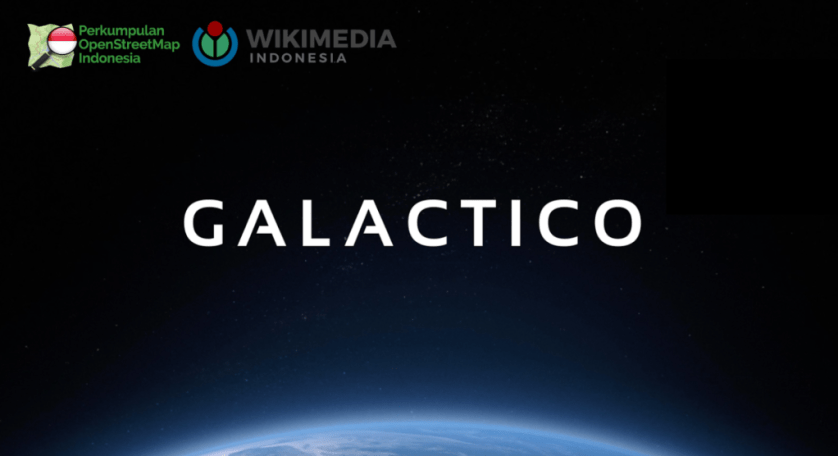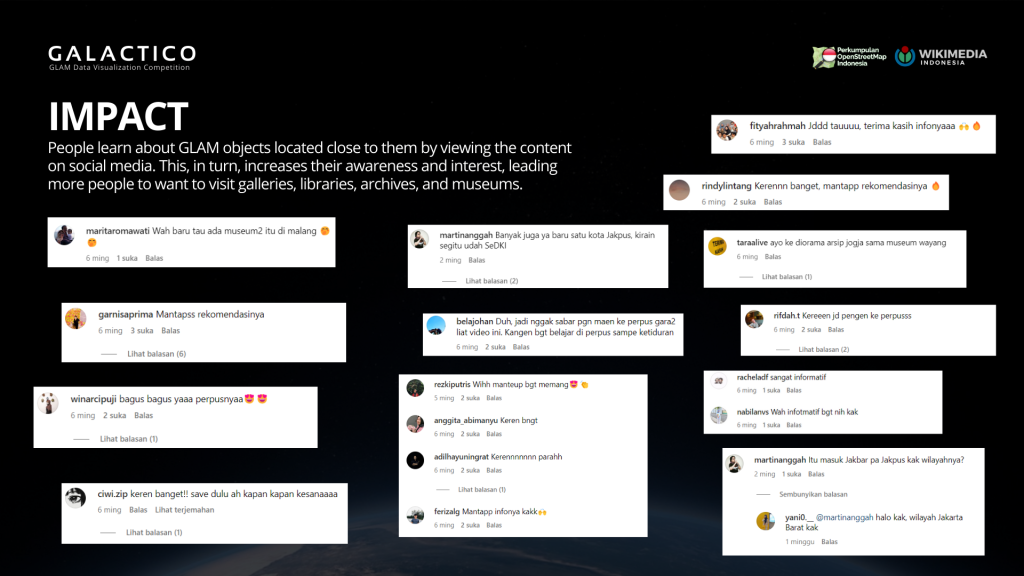The United Nations Agency for Culture, Science, and Education (UNESCO) has recognized Indonesia for owning various heritages and cultures. Thus, thousands of museums, monuments, and historical places are located in Indonesia to display heritage items, tell the Indonesian heroes’ struggle, and commemorate Indonesia’s great leaders and achievements. Indeed, Indonesia’s cultural heritage is owned by Indonesia; however, the youths also have the critical role of maintaining and developing it as their resource for identity.
According to the Directorate General of Culture, Ministry of Education and Culture of Indonesia, one of the main problems in the development of museums and historic places is the lack of innovation in marketing and promoting, which in turn has an impact on the awareness and interest of the community, especially the youth. The number of visitors has also decreased due to the COVID-19 pandemic in 2020. For instance, Jakarta’s visitors to museums and historical sites decreased drastically to 81.5% (Statistics Indonesia, 2021). Thus, modernizing digital innovation is critical as everyone lives in the digital age.
It is believed that free and open technology development can enhance the marketing of historical sites and increase visitor numbers, as the public can access the technology without any barriers. Internet access and communication infrastructure can be an innovative way to engage the community and increase the number of visitors. OpenStreetMap (OSM), as a communication platform through the map, can accurately show the location-based historical sites, which allows anyone to add the historical sites’ location freely. Through the open and free accessible map for everyone, any information on the historical sites in Indonesia can be maintained and developed. Other than that, OSM is very flexible, as anyone can add more detailed information to describe a feature. Not only show the location coordinate, but OSM’s contributors also can add information for opening hours, wheelchair access for disabled persons, the website for related features, and so forth.

Perkumpulan OpenStreetMap Indonesia (POI) collaborated with Wikimedia Indonesia in a program called Historical Crowdsources Spatial Data for Sustainable Development and Inclusive Mapping by conducting the training of contributing on OSM and Wikidata to use Galleries, Libraries, Archives, Museums (GLAM) data. During this collaboration, POI and Wikimedia organized activities to enhance the mapping of historical infrastructure data from GLAM objects into OSM. These activities included the GLAM flash competition and training sessions on OSM and Wikidata (edit-a-thon). The events spanned seven days in total, with five days of online competition dedicated to the GLAM Flash Competition (20 – 25 December 2022) and two days for the Edit-a-thon in Bandung on February 13-14, 2023. Surprisingly, these events gained a great number of GLAM objects mapping on OSM; also, the information was edited on WIkidata. Despite only 219 participants in these events, more than 126,000 buildings were added to OSM, and more than 2,400 items were edited on Wikidata. These numbers indicate that the participants had a significant level of interest in this competition and training session. Besides, the 461 GLAM objects on POI’s Web GIS page would not have been collected without their efforts.

Following their collaboration, POI and Wikimedia organized a competition called GALACTICO. Before the competition began, both organizations held a socialization event to promote it. As discussed during the socialization, GALACTICO required participants to creatively visualize GLAM data from OSM and Wikidata through infographics or videos uploaded on their Instagram accounts to increase public awareness and interest in GLAM as its event’s goal. In total, 32 teams participated in various themes about GLAM. POI and Wikimedia then assessed those teams based on specific criteria, such as theme ideas, use of OSM and Wikidata data, and the complexity and aesthetics of their output. Moreover, the evaluation process led to the selection of eight winners, including the winner, first runner-up, second runner-up, and favorite winner, in both the infographic and Instagram reels categories. The event concluded on May 17, 2023, with a closing ceremony where the winners were announced.
Congratulations to the Wong Ling Lung, The Manuls, Minions, and Lembah Halimun teams for winning the infographic categories. Additionally, the Instagram reels categories were won by Hulahoop, Gudetamap, Penyelamat Bumi, and Angkara Cemara. POI and Wikimedia also sincerely thank all the teams who participated in GALACTICO. Thanks to their efforts, many people have found this highly informative and discovered the GLAM objects in their vicinity. Even some are willing to visit these GLAM objects during their leisure time.

It is hoped that the program will increase the number of GLAM visitors and that more young people will actively preserve GLAM as an integral part of their ancestors’ heritage. Besides, it has been proven that open data is very useful and beneficial in this digital age. It is because the actual value of intangible cultural heritage is not in its cultural presentation but in transmitting valuable knowledge and skills from one generation to another.

Can you help us translate this article?
In order for this article to reach as many people as possible we would like your help. Can you translate this article to get the message out?
Start translation